Who and how came up with measuring pressure: another background story
Today we offer you another note from the column “how it was”, in which we briefly introduced you to the history of the pedometer, the problem of studying the phenomenon of lucid dreams, the real “author” of the electronic cigarette, as well as a long history of studying the human brain.

This time we offer a history of measuring blood pressure, since it is short: for the first time, pressure was measured in 1733, and inside we will tell about who did it.
Blood pressure can be measured directly or "indirectly", and the latter includes all non-invasive methods, the most common of which the most "quoted" are digital and mechanical blood pressure monitors. Nevertheless, given a certain passion for this “metric” among manufacturers of wearable gadgets, pears and cuffs are no longer monopolists.
')
On the pages of our blog, you could read the review of the W / me2 tracker, see a selection of modern gadgets that can or could be able to make measurements. Rumors about the second Apple Watch model systematically endow the new watch with a pressure sensor, and the market leader Fitbit last year assured the general director that it would add the ability to monitor pressure in the current year. One way or another, these are all non-classic methods.
What will happen in the future, of course, none of us really knows, but we dared to look a bit into the past. So for the first time, blood pressure was measured by Stephen Heiles . The very case when medicine and religion successfully “got along” in one head and did not interfere with each other.
The theologian and naturalist was born in 1677 in a large family. He studied theology and natural sciences, and then sent the post of vicar in one of the counties.
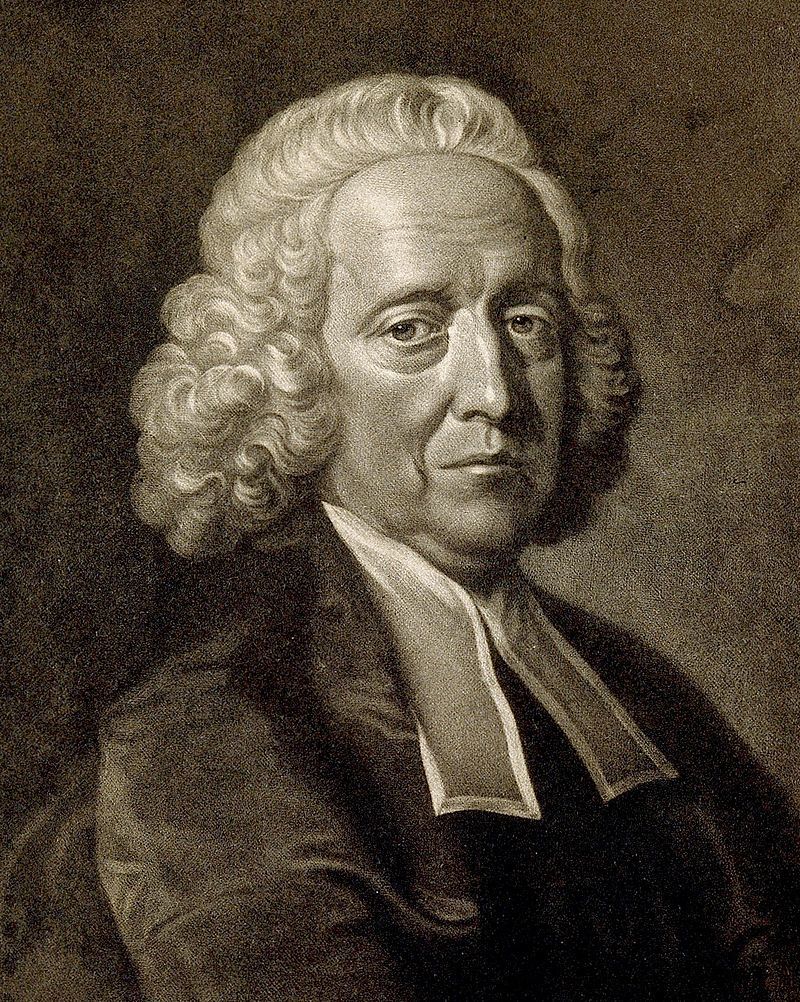
However, he was remembered not as a philosopher or theorist of Christianity, but as a scientist, with whose name is associated with several major discoveries in botany, a number of inventions, as well as the first experiments to measure pressure. These experiments are devoted to the second part of his book " Static Essays ", where descriptions of experiments and tables for the first time obtained data are given.

It is imperative to clarify that the first experiments with the insertion of a tube into the vessels to determine how high the blood rises were made, of course, not in public, for which, by the way, Heiles was criticized, including well-known contemporaries. One of them was the poet Alexander Pope, an avid dog lover.
An image of one of the first experiments of Heiles, which he conducted on horseback, is preserved:

Anyway, this “slaughter” approach endowed Heils with the title of the first person who measured blood pressure, and “Hemostatics”, the book from the second part of “Static Essays” - is a monument about this and that is proof of that. Heles has been conducting his experiments since around 1709 .
By the way, in the first part, the author discusses the role of air in the life of animals and plants, draws attention to the ability of the roots of some samples to very selectively absorb minerals from the soil, talks about air quality and its effect on longevity. These observations prompted him to invent a fan!

And at the same time it began to be used in prisons, at factories, in ports, which significantly (by those standards) increased the life expectancy of workers and criminals serving sentences.
100 years have passed ...
It must be said that the possibilities discovered by Heiles did not immediately find application in clinical medicine, and almost a hundred years passed before the experiments on measuring blood pressure were continued. Their physicist Jean-Louis Marie Poiseuille continued .

His contribution to hemodynamics is inseparable from physical experiments, and some of them were pushing others. So, as a result of research, a law was formulated that bears his name, as well as one of the laminar flows.
His research in the field of fluid flow through a thin cylindrical tube has been widely used to determine the viscosity and flow rate in capillaries. For the first time, to determine the pressure, he used a mercury manometer, a U-shaped “device”, which helped him to fix the pressure, including in humans. It happened during the amputation of the thigh, and was expressed as 120 mm. Hg Art. Actually, the tradition of "mercury" takes its roots precisely from the mercury manometer Poiseuille. The discoveries of the scientist, connected with medicine, came at the end of the 30s of the 19th century.
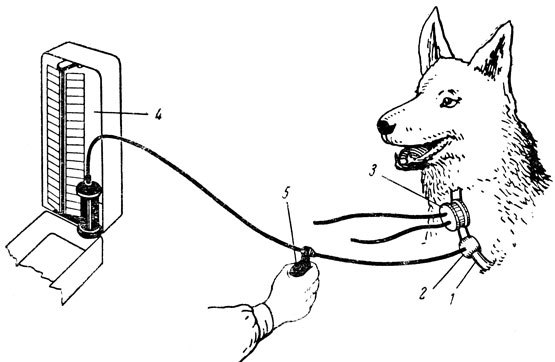
His “U” was improved by the outstanding physiologist Karl Ludwig , who owns a number of important discoveries in medicine, including in the field of cardiovascular diseases, the nervous system, etc.

He proposed to measure the pressure with a kimograph. So he called his “gadget”, which in essence was an advanced mercury manometer and allowed graphic processing and recording the results of pressure in different conditions.

Since it was based on the mercury manometer used by Poiseur, Ludwig’s method was also invasive, and one of the sides of the tube immersed in the artery was fixed in it with a catheter. Experiments on animals allowed us to detect a number of patterns between the respiratory processes and blood pressure. Later, another device appeared - the Ludwig blood clock for measuring regional blood flow and cardiac output. It was about 1847.
These experiments, in contrast to the purely scientific experiments of the same Heils, could already be used in medicine, but the clinical practice could be supplemented with measurement methods later, when the first possibilities of non-invasive measurement appeared. They are associated with the name of Charles Wirordt , who also worked in the mid-19th century.
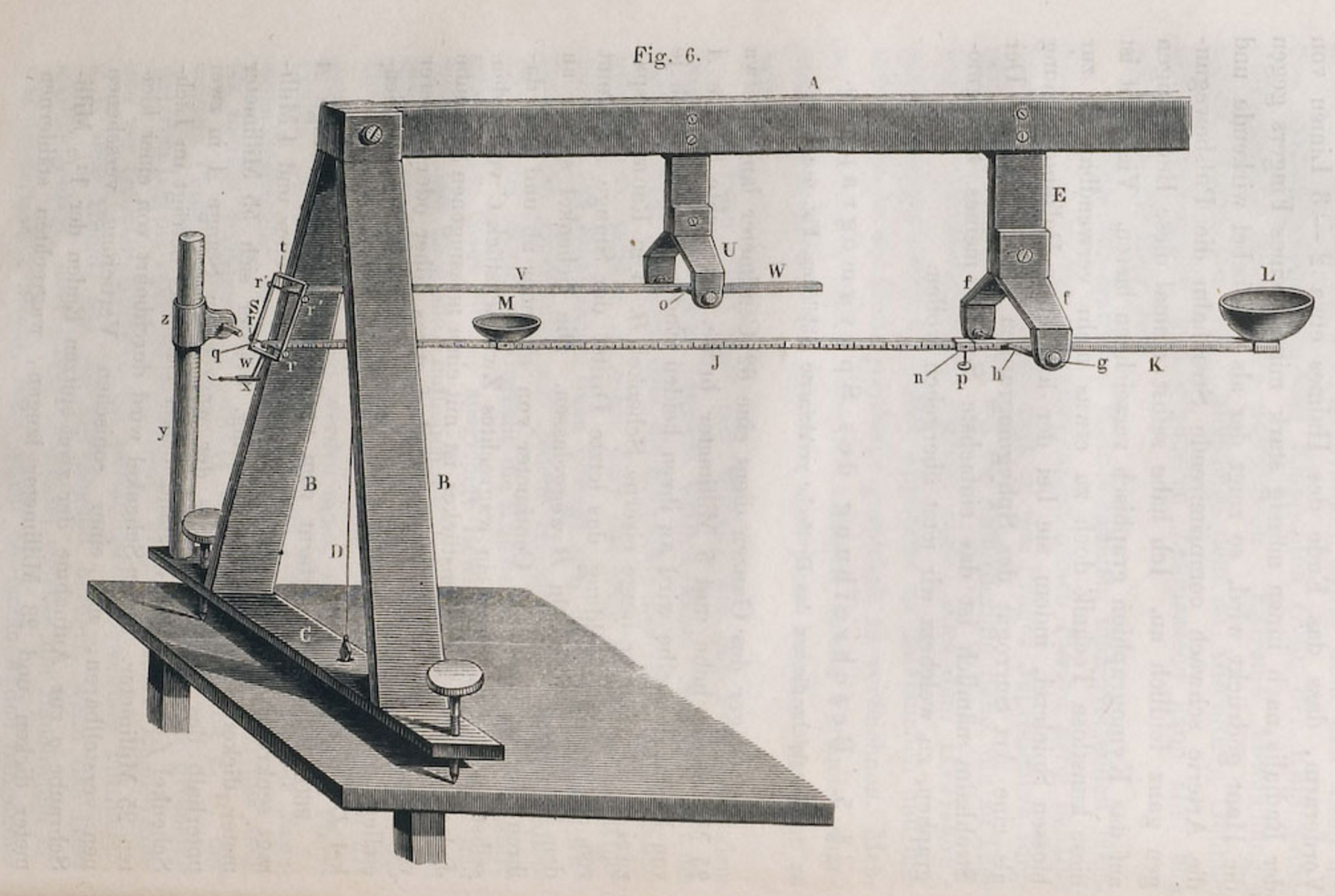
He worked on methods for measuring blood flow, as a result of which he proposed a device that was called a sphygmograph and initiated the sphygmography as a method in medicine. The scientist bases his measurement method on the hypothesis that indirect pressure can be measured by “back pressure” at which the pulsation stops. And the first testimony he recorded in front of you:

Actually, this idea with a pulsation, or a beating, in the process of measuring pressure is still relevant today.
Etienne-Jules Marais , who is known both as a physiologist, and as a cardiologist, and as a photographer, who initiated the whole direction of chronophotography, worked on the improvement of Wirordt's device.

Marais introduced into clinical medicine the first sphygmograph, which was developed in conjunction with the Breguet watchmakers, and also tried to obtain pressure data using the plethysmography method.
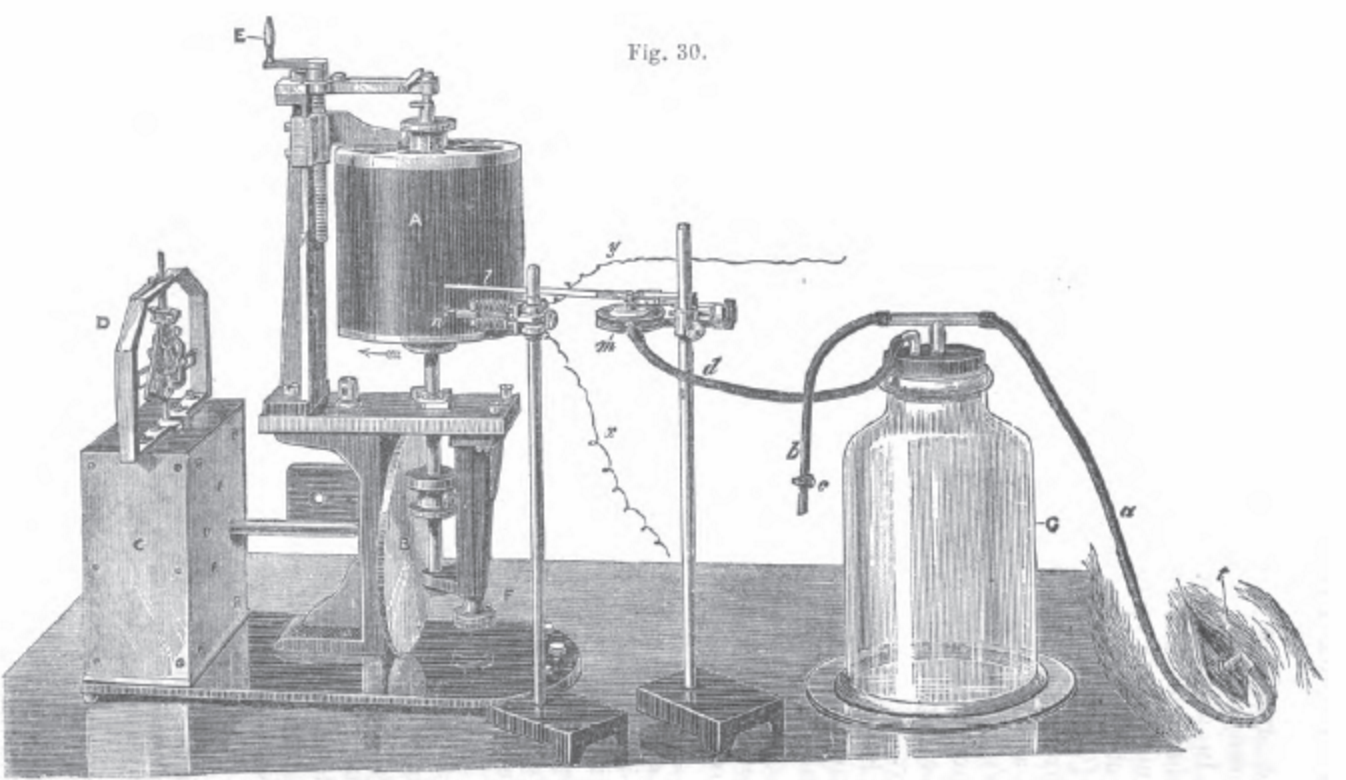
His work “Pressure and Blood Flow Rate” was published in 1876, where he described the principle of arterial wall relaxation, and achieved for the first time two numbers on his device : systolic and diastolic pressure.
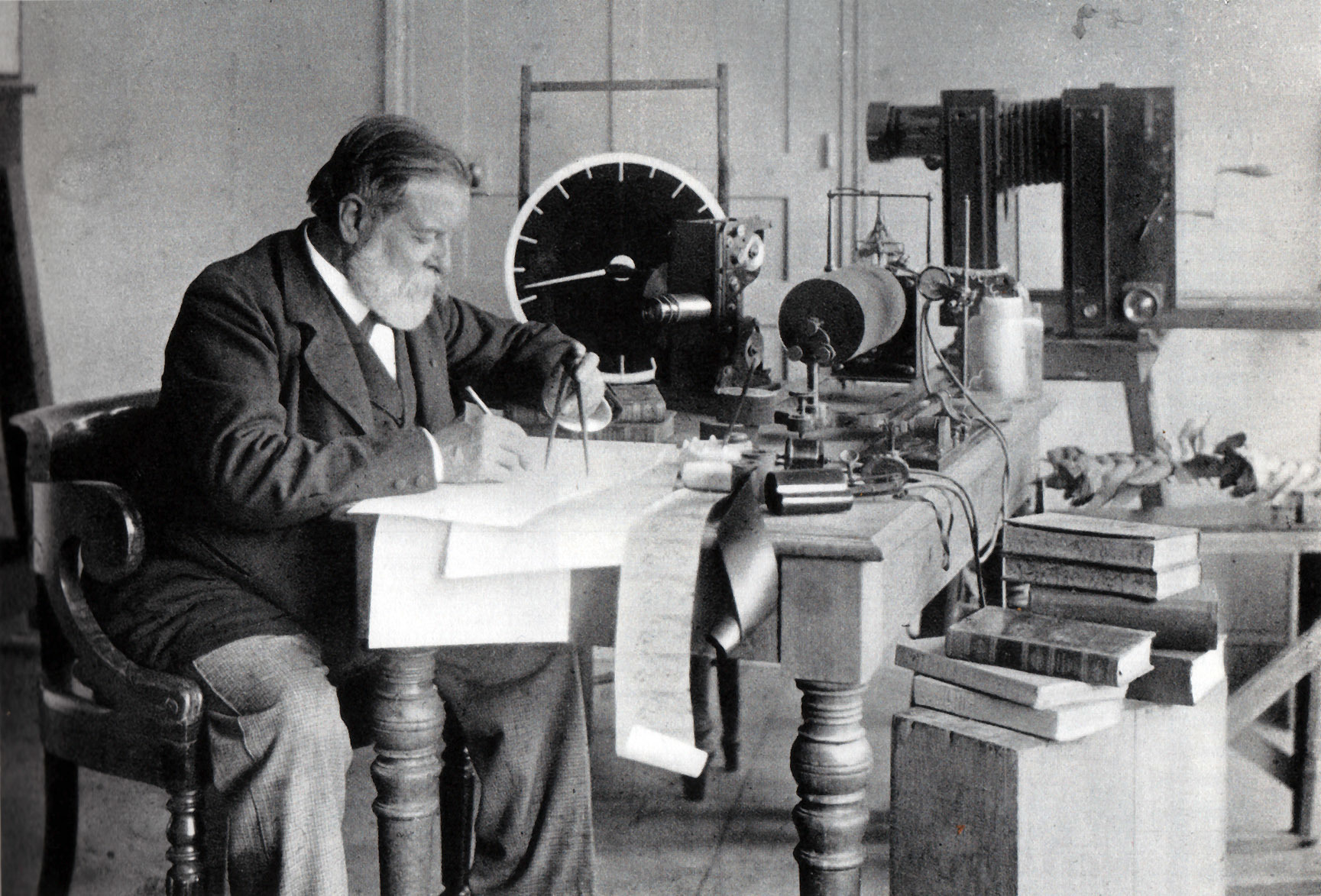
After measuring the pressure by placing a hand in a glass flask, that is, using the Marais method, another one appeared that was similar but improved. He was suggested by Samuel Siegfried Karl Ritter von Bash . In 1881, he replaces the flask with a rubber bag with water, which is already wrapped around his arm. But despite the fact that this method already resembles a kind of modern blood pressure monitors, he showed only the upper, systolic pressure.
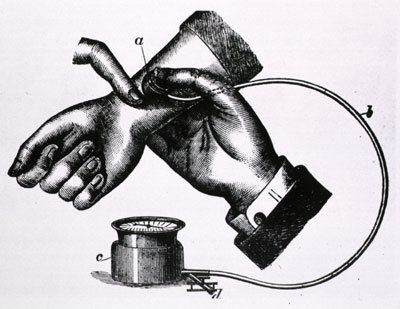
Bash's device is modernizing, even more like modern, famous cardiologist Pierre Potin , who in 1899 exchanged water in a rubber bag for air, who also, putting pressure on his arm, changed the “position” of mercury in the sphygmomanometer, registering the upper pressure.
Gustav Gartner also used the hollow rubber cuff to measure pressure, but he first described the invention he had created differently. So he coined the term “tonometer”, and this is how we still call devices with a similar purpose to this day.

A few years earlier, in 1896, a new method appeared with the old name of equipment. His appearance is associated with the name Riva Rocci .

The essence of his method was as follows. Air was injected into the rubber tire encircling the arm, and the reading of the mercury column at which the pulsation was stopped corresponded to the systolic pressure. Then the air was gradually released, and the return of the pulsation was recorded as diastolic pressure.
The invention of Riva-Rocci without any encroachment on the method was slightly modernized by the German doctor Heinrich von Recklinghausen , replacing the mercury scale with a spring scale and the rubber tire with a cuff close to the current one.
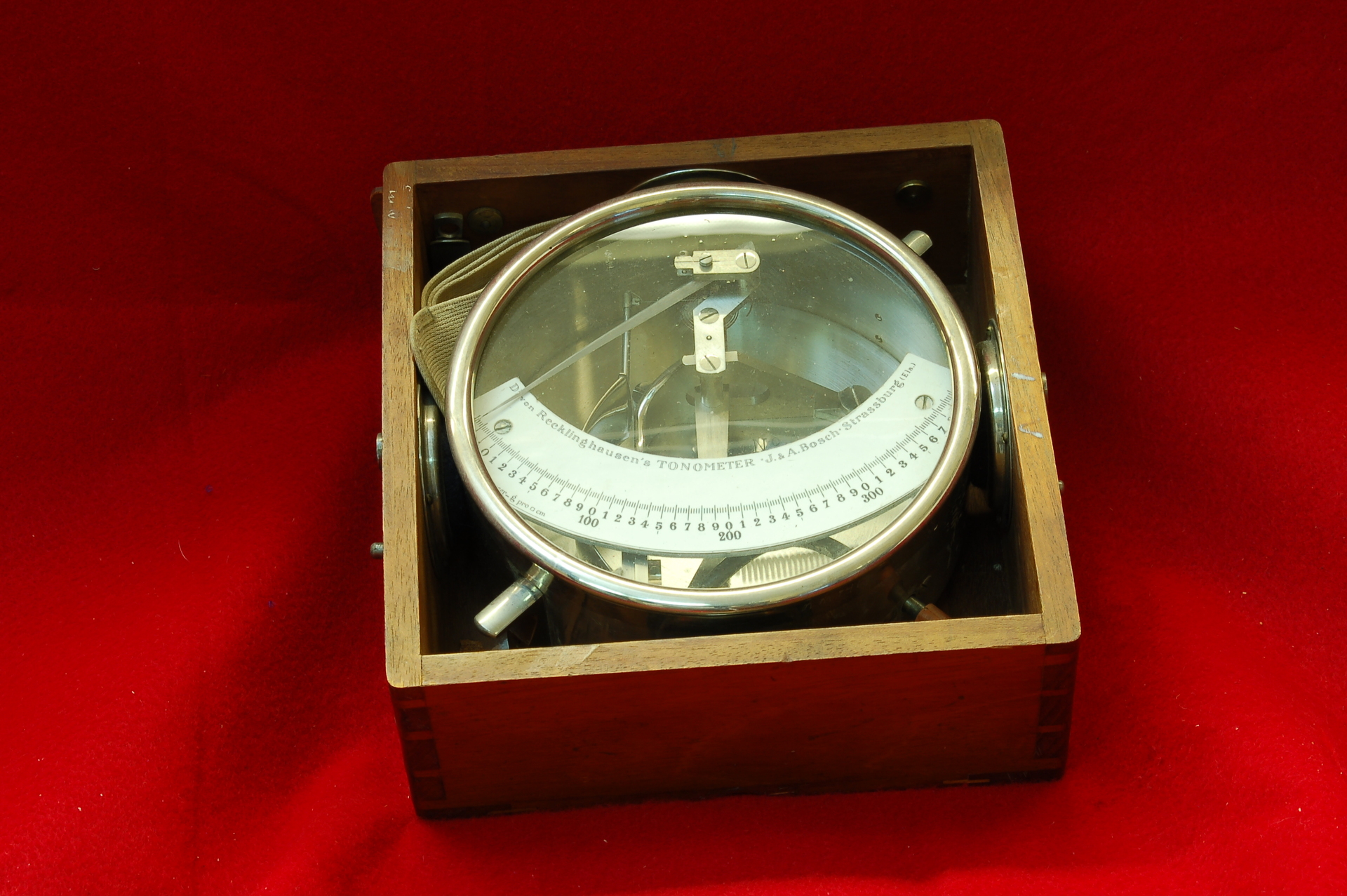
Korotkov method
This method is used now in clinical practice all over the world. He was opened in 1905 by a Russian military doctor, hearing the noises that arise when pumping a pear cuff. This turned out to be by chance, therefore this method is theoretically justified by another professor, whose name was at one time in combination with the “Korotkovo-Yanovsky Method”.
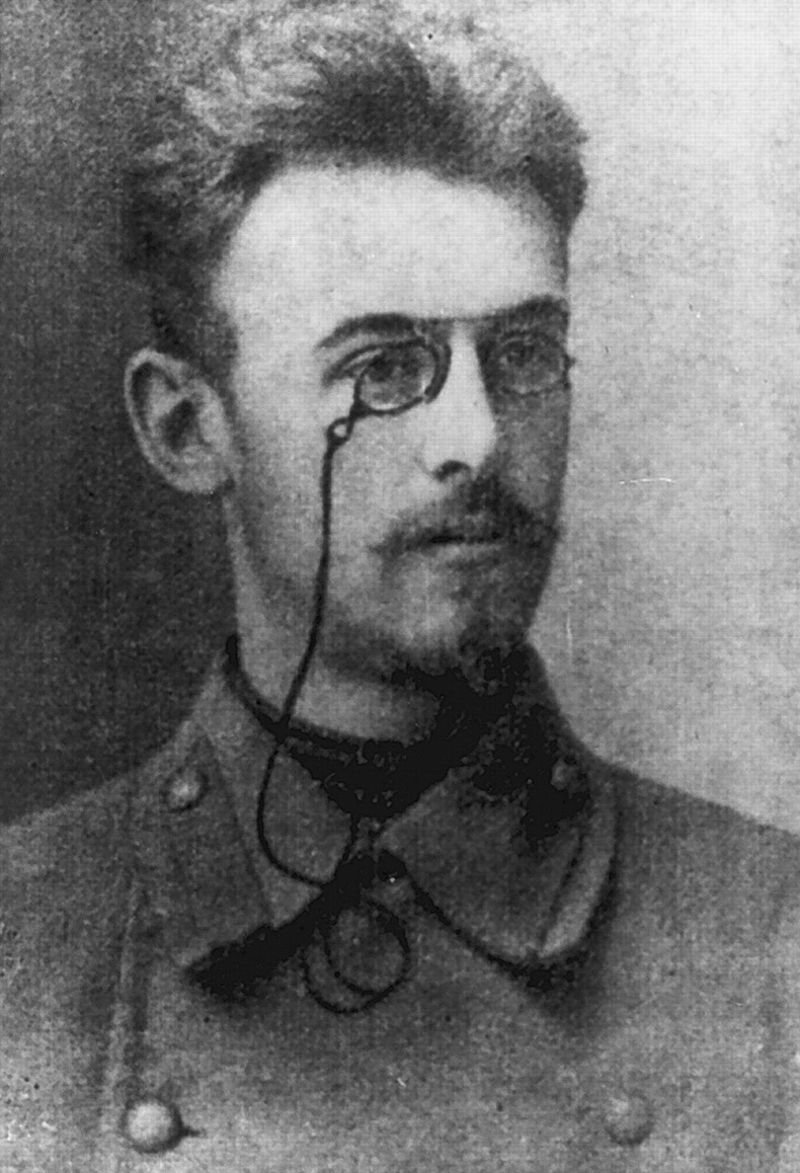
According to this mechanics, the pressure level in the cuff, recorded at the time of the first noise, shows the upper pressure. When the bloodstream gradually levels off, and the sounds disappear, diastolic pressure is fixed.
The further development of pressure measurement capabilities is associated more with the creation and improvement of new devices, tonometers and other devices, and all the main names of practitioners are listed.
Thanks for attention.

This time we offer a history of measuring blood pressure, since it is short: for the first time, pressure was measured in 1733, and inside we will tell about who did it.
Blood pressure can be measured directly or "indirectly", and the latter includes all non-invasive methods, the most common of which the most "quoted" are digital and mechanical blood pressure monitors. Nevertheless, given a certain passion for this “metric” among manufacturers of wearable gadgets, pears and cuffs are no longer monopolists.
')
On the pages of our blog, you could read the review of the W / me2 tracker, see a selection of modern gadgets that can or could be able to make measurements. Rumors about the second Apple Watch model systematically endow the new watch with a pressure sensor, and the market leader Fitbit last year assured the general director that it would add the ability to monitor pressure in the current year. One way or another, these are all non-classic methods.
What will happen in the future, of course, none of us really knows, but we dared to look a bit into the past. So for the first time, blood pressure was measured by Stephen Heiles . The very case when medicine and religion successfully “got along” in one head and did not interfere with each other.
The theologian and naturalist was born in 1677 in a large family. He studied theology and natural sciences, and then sent the post of vicar in one of the counties.

However, he was remembered not as a philosopher or theorist of Christianity, but as a scientist, with whose name is associated with several major discoveries in botany, a number of inventions, as well as the first experiments to measure pressure. These experiments are devoted to the second part of his book " Static Essays ", where descriptions of experiments and tables for the first time obtained data are given.

It is imperative to clarify that the first experiments with the insertion of a tube into the vessels to determine how high the blood rises were made, of course, not in public, for which, by the way, Heiles was criticized, including well-known contemporaries. One of them was the poet Alexander Pope, an avid dog lover.
An image of one of the first experiments of Heiles, which he conducted on horseback, is preserved:

Anyway, this “slaughter” approach endowed Heils with the title of the first person who measured blood pressure, and “Hemostatics”, the book from the second part of “Static Essays” - is a monument about this and that is proof of that. Heles has been conducting his experiments since around 1709 .
By the way, in the first part, the author discusses the role of air in the life of animals and plants, draws attention to the ability of the roots of some samples to very selectively absorb minerals from the soil, talks about air quality and its effect on longevity. These observations prompted him to invent a fan!
And at the same time it began to be used in prisons, at factories, in ports, which significantly (by those standards) increased the life expectancy of workers and criminals serving sentences.
100 years have passed ...
It must be said that the possibilities discovered by Heiles did not immediately find application in clinical medicine, and almost a hundred years passed before the experiments on measuring blood pressure were continued. Their physicist Jean-Louis Marie Poiseuille continued .

His contribution to hemodynamics is inseparable from physical experiments, and some of them were pushing others. So, as a result of research, a law was formulated that bears his name, as well as one of the laminar flows.
His research in the field of fluid flow through a thin cylindrical tube has been widely used to determine the viscosity and flow rate in capillaries. For the first time, to determine the pressure, he used a mercury manometer, a U-shaped “device”, which helped him to fix the pressure, including in humans. It happened during the amputation of the thigh, and was expressed as 120 mm. Hg Art. Actually, the tradition of "mercury" takes its roots precisely from the mercury manometer Poiseuille. The discoveries of the scientist, connected with medicine, came at the end of the 30s of the 19th century.

His “U” was improved by the outstanding physiologist Karl Ludwig , who owns a number of important discoveries in medicine, including in the field of cardiovascular diseases, the nervous system, etc.

He proposed to measure the pressure with a kimograph. So he called his “gadget”, which in essence was an advanced mercury manometer and allowed graphic processing and recording the results of pressure in different conditions.

Since it was based on the mercury manometer used by Poiseur, Ludwig’s method was also invasive, and one of the sides of the tube immersed in the artery was fixed in it with a catheter. Experiments on animals allowed us to detect a number of patterns between the respiratory processes and blood pressure. Later, another device appeared - the Ludwig blood clock for measuring regional blood flow and cardiac output. It was about 1847.
These experiments, in contrast to the purely scientific experiments of the same Heils, could already be used in medicine, but the clinical practice could be supplemented with measurement methods later, when the first possibilities of non-invasive measurement appeared. They are associated with the name of Charles Wirordt , who also worked in the mid-19th century.

He worked on methods for measuring blood flow, as a result of which he proposed a device that was called a sphygmograph and initiated the sphygmography as a method in medicine. The scientist bases his measurement method on the hypothesis that indirect pressure can be measured by “back pressure” at which the pulsation stops. And the first testimony he recorded in front of you:

Actually, this idea with a pulsation, or a beating, in the process of measuring pressure is still relevant today.
Etienne-Jules Marais , who is known both as a physiologist, and as a cardiologist, and as a photographer, who initiated the whole direction of chronophotography, worked on the improvement of Wirordt's device.

Marais introduced into clinical medicine the first sphygmograph, which was developed in conjunction with the Breguet watchmakers, and also tried to obtain pressure data using the plethysmography method.

His work “Pressure and Blood Flow Rate” was published in 1876, where he described the principle of arterial wall relaxation, and achieved for the first time two numbers on his device : systolic and diastolic pressure.

After measuring the pressure by placing a hand in a glass flask, that is, using the Marais method, another one appeared that was similar but improved. He was suggested by Samuel Siegfried Karl Ritter von Bash . In 1881, he replaces the flask with a rubber bag with water, which is already wrapped around his arm. But despite the fact that this method already resembles a kind of modern blood pressure monitors, he showed only the upper, systolic pressure.

Bash's device is modernizing, even more like modern, famous cardiologist Pierre Potin , who in 1899 exchanged water in a rubber bag for air, who also, putting pressure on his arm, changed the “position” of mercury in the sphygmomanometer, registering the upper pressure.
Gustav Gartner also used the hollow rubber cuff to measure pressure, but he first described the invention he had created differently. So he coined the term “tonometer”, and this is how we still call devices with a similar purpose to this day.
A few years earlier, in 1896, a new method appeared with the old name of equipment. His appearance is associated with the name Riva Rocci .

The essence of his method was as follows. Air was injected into the rubber tire encircling the arm, and the reading of the mercury column at which the pulsation was stopped corresponded to the systolic pressure. Then the air was gradually released, and the return of the pulsation was recorded as diastolic pressure.
The invention of Riva-Rocci without any encroachment on the method was slightly modernized by the German doctor Heinrich von Recklinghausen , replacing the mercury scale with a spring scale and the rubber tire with a cuff close to the current one.

Korotkov method
This method is used now in clinical practice all over the world. He was opened in 1905 by a Russian military doctor, hearing the noises that arise when pumping a pear cuff. This turned out to be by chance, therefore this method is theoretically justified by another professor, whose name was at one time in combination with the “Korotkovo-Yanovsky Method”.

According to this mechanics, the pressure level in the cuff, recorded at the time of the first noise, shows the upper pressure. When the bloodstream gradually levels off, and the sounds disappear, diastolic pressure is fixed.
The further development of pressure measurement capabilities is associated more with the creation and improvement of new devices, tonometers and other devices, and all the main names of practitioners are listed.
Thanks for attention.
Source: https://habr.com/ru/post/367595/
All Articles